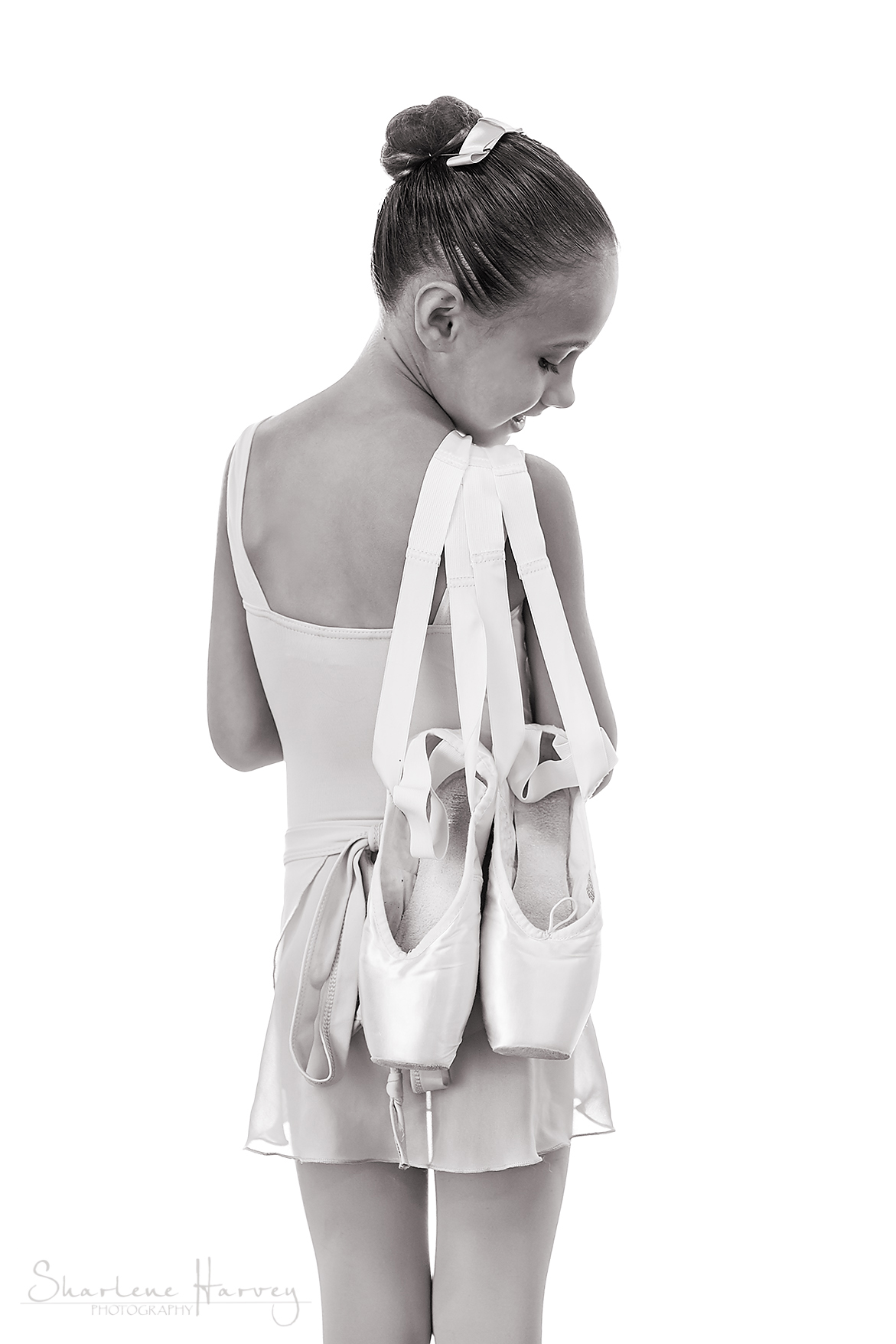
When a little girl enters our studios and commences ballet there is usually an immediate desire to be like the big girls and dance “en pointe”.
Our walls are full of beautiful pictures of ballerinas dancing in Pointe shoes, and as we engage in improvisation and free dancing at the end of class, I can see them dreaming of floating like those ballerinas on the walls. Little do they know of the hard work, pain and challenges that go into making it all look so effortless!
I am forever reminding our little ones to not walk around on their tips toes. There is a lot of work to do before those desired pointe shoes are allowed on their feet! My own teacher’s words ring in my ears “you only get one body, our job as teachers is to look after it”. No truer words were spoken and I repeat this often to my young dancers as they express their desire for pointe shoes.
How do we look after their bodies? What are the things that we are looking as teachers to know that they are ready?
Our role as dance teachers is to look at the whole child and take into consideration many factors when considering readiness for pointe work. At Peninsula School of Dance we assess the following before then sending our students to a local expert Podiatrist, who specialises in pointe assessments for dancers.
General criteria include:
- dancers should be in at least Grade 6 level ballet
- have commenced pre-pointe work exercises
- are at least 11-12years of age
- are taking a minimum of two ballet classes per week
- have been studying ballet for a minimum of 5-6 years
- are mature and committed dancers
- are able to take corrections and apply them well from their teacher
More specifically dancers should be able to:
- demonstrate good postural core control and alignment in static positions and whilst moving, for example, the dancer can maintain posture taking off and landing from a jump or releve
- maintain their turnout whilst dancing
- show awareness of proper ankle and foot alignment, avoiding any sickling or rolling in especially when rising onto demi-pointe
- demonstrates good foot control during whilst dancing
- is able to releve onto one leg with good control and a straight supporting leg
- can perform 20 single leg rises in the centre without fatigue and maintaining alignment
Making sure your child’s feet are ready
Once we have made the above assessment and believe our students are ready for pointe work from our perspective, they are given an invitation to undertake a pointe assessment with a specialist podiatrist, Marie Butler from the Mornington Foot Clinic.
The podiatrists at Mornington Foot Clinic are trained in the assessment/management of dancing related injury and pre-pointe assessments. Marie Butler is a qualified ballet teacher and has been past consultant to the Australian Ballet. She has lectured on the dancer’s foot to ballet teachers, students, podiatrists and physiotherapists.
The assessment is an important step in the process. With this specialist assessment we can work with the Podiatrists to help reduce the chance of injury whilst preparing and performing en pointe.
For more information on the Mornington Foot Clinic you can visit their website:
http://www.morningtonfootclinic.com.au/
For more information on Ballet classes at Peninsula School of Dance:
https://peninsuladance.com.au/ballet/
Next steps
Once students receive the go ahead from the Podiatrist, a pointe shoe fitting should be arranged with the guidance of the dance teacher. We recommend not sewing ribbons on until the dacne teacher has double checked that the shoes have been fitted correctly.
Once the shoes have been approved by the teacher ribbons should be sewn on. We encourage our dancers to learn this important skill. There are plenty of tutorials on youtube and instruction sheets. Here are just a few
http://www.bloch.com.au/content/53-sewing-ribbon-onto-ballet-shoes
https://www.youtube.com/watch?v=4q–RBX_kp8
https://www.youtube.com/watch?v=GkPC22visX4
The next step is to bring them to class, once again for the teacher to double check. Then the all-important first lesson “en pointe”can begin!

